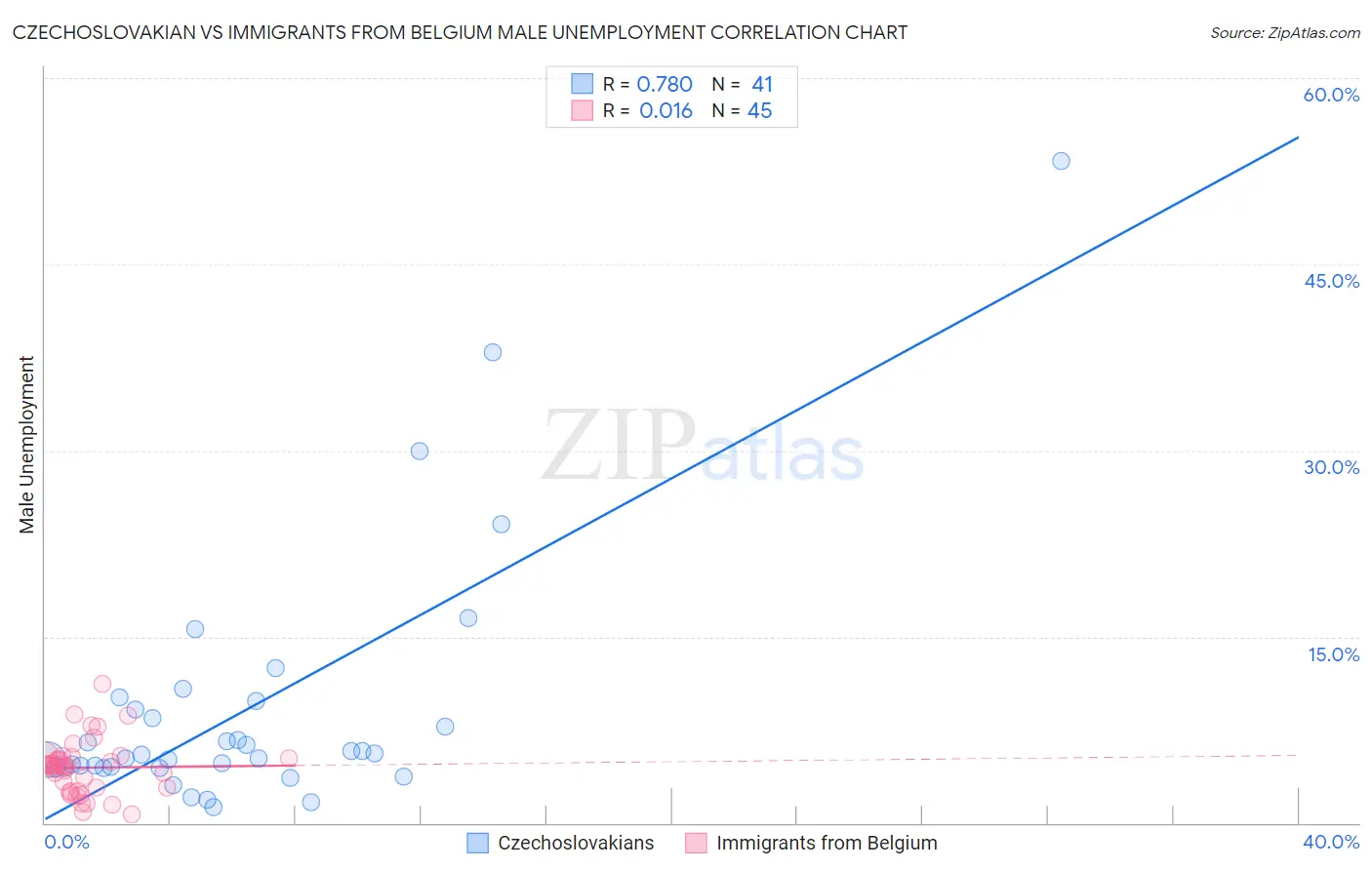Czechoslovakian vs Immigrants from Belgium Male Unemployment
COMPARE
Czechoslovakian
Immigrants from Belgium
Male Unemployment
Male Unemployment Comparison
Czechoslovakians
Immigrants from Belgium
5.0%
MALE UNEMPLOYMENT
98.7/ 100
METRIC RATING
55th/ 347
METRIC RANK
4.9%
MALE UNEMPLOYMENT
99.2/ 100
METRIC RATING
42nd/ 347
METRIC RANK
Czechoslovakian vs Immigrants from Belgium Male Unemployment Correlation Chart
The statistical analysis conducted on geographies consisting of 366,692,431 people shows a strong positive correlation between the proportion of Czechoslovakians and unemployment rate among males in the United States with a correlation coefficient (R) of 0.780 and weighted average of 5.0%. Similarly, the statistical analysis conducted on geographies consisting of 146,559,932 people shows no correlation between the proportion of Immigrants from Belgium and unemployment rate among males in the United States with a correlation coefficient (R) of 0.016 and weighted average of 4.9%, a difference of 0.86%.

Male Unemployment Correlation Summary
| Measurement | Czechoslovakian | Immigrants from Belgium |
| Minimum | 1.3% | 0.70% |
| Maximum | 53.3% | 11.2% |
| Range | 52.0% | 10.5% |
| Mean | 9.1% | 4.5% |
| Median | 5.5% | 4.6% |
| Interquartile 25% (IQ1) | 4.5% | 2.7% |
| Interquartile 75% (IQ3) | 9.5% | 5.2% |
| Interquartile Range (IQR) | 5.1% | 2.5% |
| Standard Deviation (Sample) | 10.2% | 2.2% |
| Standard Deviation (Population) | 10.1% | 2.1% |
Demographics Similar to Czechoslovakians and Immigrants from Belgium by Male Unemployment
In terms of male unemployment, the demographic groups most similar to Czechoslovakians are Yugoslavian (5.0%, a difference of 0.0%), Immigrants from Bulgaria (5.0%, a difference of 0.0%), Jordanian (5.0%, a difference of 0.11%), Irish (5.0%, a difference of 0.17%), and Slovene (5.0%, a difference of 0.19%). Similarly, the demographic groups most similar to Immigrants from Belgium are Chinese (4.9%, a difference of 0.020%), Northern European (4.9%, a difference of 0.10%), Immigrants from Japan (4.9%, a difference of 0.10%), Burmese (4.9%, a difference of 0.19%), and Immigrants from Bosnia and Herzegovina (4.9%, a difference of 0.26%).
| Demographics | Rating | Rank | Male Unemployment |
| Immigrants | Bosnia and Herzegovina | 99.4 /100 | #38 | Exceptional 4.9% |
| Burmese | 99.3 /100 | #39 | Exceptional 4.9% |
| Northern Europeans | 99.3 /100 | #40 | Exceptional 4.9% |
| Chinese | 99.3 /100 | #41 | Exceptional 4.9% |
| Immigrants | Belgium | 99.2 /100 | #42 | Exceptional 4.9% |
| Immigrants | Japan | 99.2 /100 | #43 | Exceptional 4.9% |
| Immigrants | Korea | 99.1 /100 | #44 | Exceptional 4.9% |
| Immigrants | Zimbabwe | 99.0 /100 | #45 | Exceptional 4.9% |
| Bhutanese | 98.9 /100 | #46 | Exceptional 4.9% |
| Austrians | 98.9 /100 | #47 | Exceptional 4.9% |
| Immigrants | Scotland | 98.9 /100 | #48 | Exceptional 4.9% |
| Poles | 98.9 /100 | #49 | Exceptional 4.9% |
| Croatians | 98.9 /100 | #50 | Exceptional 4.9% |
| Slovenes | 98.8 /100 | #51 | Exceptional 5.0% |
| Irish | 98.8 /100 | #52 | Exceptional 5.0% |
| Jordanians | 98.8 /100 | #53 | Exceptional 5.0% |
| Yugoslavians | 98.7 /100 | #54 | Exceptional 5.0% |
| Czechoslovakians | 98.7 /100 | #55 | Exceptional 5.0% |
| Immigrants | Bulgaria | 98.7 /100 | #56 | Exceptional 5.0% |
| Turks | 98.5 /100 | #57 | Exceptional 5.0% |
| Lithuanians | 98.5 /100 | #58 | Exceptional 5.0% |